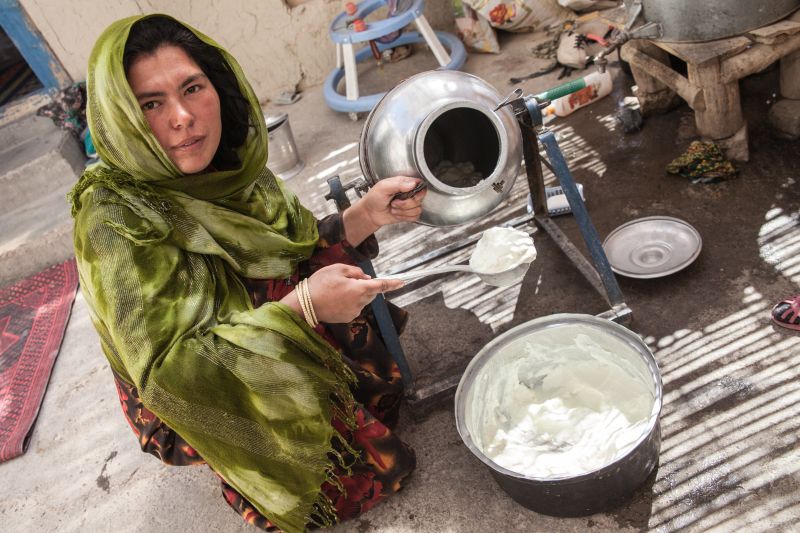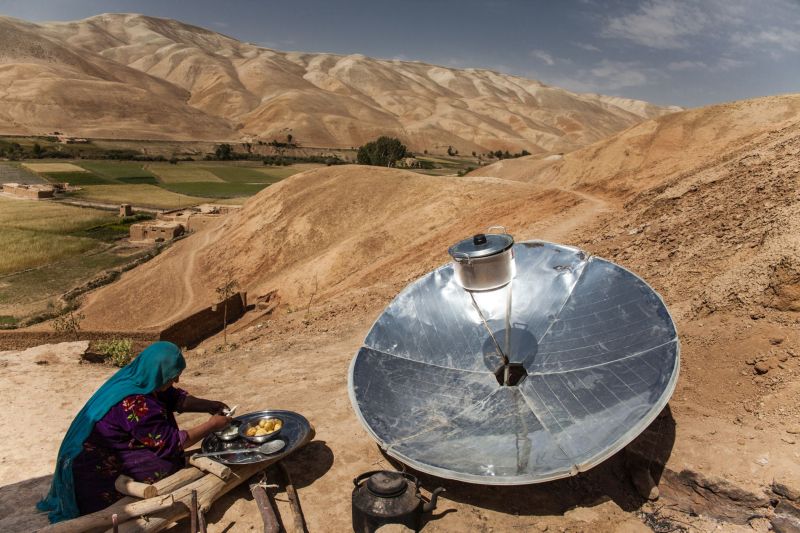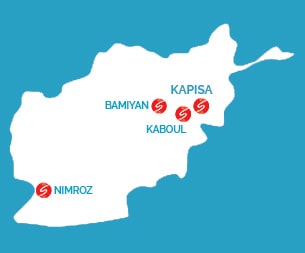In the mountainous provinces of Bamyan and Wardak, central Afghanistan, agriculture and living conditions are hard: isolation, rough climate, lack of agricultural lands, erosion…
Farmers, craftsmen, local authorities and NGOs are taking action for a better life.
“We have a veranda and a stove that have been built by the craftsmen, a tandoor cap* purchased at the bazaar and training to their use, we have a warm place to wash, sew, welcome guests, dry the laundry and bathe the children during winter. We also need less wood for the cold season, and there is much less smoke in the kitchen”. Fatima has six children. Her testimony is the direct consequence of the work managed in collaboration by humanitarian actors in the region for years. This is living proof of an efficient synergy that communities can benefit from and make life better in rural territories.

3 FIELDS OF ACTIVITY FOR COLLECTIVE INNOVATION
The different actors, farmers, craftsmen, local authorities and NGOs set up a three-year consortium programme with SOLIDARITÉS INTERNATIONAL, GERES and Madera to tackle three fields of activity. First of all agriculture and farming. We organized new techniques (fertilization, compost, irrigation, greenhouses, veterinary care, stable improvement) with the settlement of technical referent farmers in villages, collective demonstrative vegetable gardens and Farmer field schools.
The second focus was on domestic energy. The actors distributed adequate and new equipment (verandas, solar cookers). They also improved the existing ones (traditional cookers, tandoor cap). More than 100 craftsmen were partners in this project. They were trained to produce affordable innovations.
The last innovations were set up with natural resource management (water, grazing and biodiversity) thanks to the community pastoralist councils and water user groups (collective definition of the watershed management plan).
INNOVATION FOR AND WITH COMMUNITIES
Every single innovation, even moderate, is progress towards better living conditions. Innovations result from a participative methodology combining NGO knowledge and integration of practices and local means for a better adoption as testifies Abdul Malik, in charge of community pastoralist councils. “NGO and farmers organized the management of community grazing. We identify places where we do not collect brush, sow alfalfa in the mountains and share pasture according to the community herd. This new use of pasture is used to decrease the risk of flooding, which has been disastrous the last few years, and is beneficial to our environment by regenerating vegetation.

WORK EVERYONE CAN BENEFIT FROM
Today hundreds of consumers and producers benefit from those innovations and traditional tool improvements., attests: ”After training I shared the tandoor cap with people in the community. I sold 400 of them with benefits. People are satisfied with them because the metal is of good quality. Before that I made stoves, which kept me busy during autumn and winter, now my activity keeps me busy all year”, says Safar Mohammad, a tandoor cap producer.
This article was published in the Barometer of Sustainable Solutions.
Published Tuesday, September 5, 2017 at the Convergences World Forum in Paris, the Barometer of Sustainable Solutions is a major public engagement and outreach publication for civil society, policy makers and the private sector. The fruit of a collective reflection, it brings together 22 associations, organizations and NGOs who believe that innovation has a key role to play in achieving the Sustainable Development Goals (SDGs).
The 2017 edition of the Barometer of Sustainable Solutions has chosen innovation as the gateway to a more sustainable world. It offers a broad view of innovation. Part of the objective 9 (“Industry, innovation and infrastructure”), innovation is indeed much more than that: it becomes a tool, a strength and also a dynamic open to all fields of knowledge and expertise. Thus presenting the opening of possibilities, the Barometer shows that durable solutions of local original initiatives can be an answer to these universal themes such as poverty, inequality and climate change. The creation of e-health applications (pp.4-5) or dematerialized aid distribution systems (p.6), the use of mapping to restore public infrastructure and regulated (pp. 7-8) or the establishment of social enterprises and partnerships in areas hit by inequality (pp.9-12) are examples of projects that have placed technological innovation, social, or frugal technology at their centre.
Barometer of Sustainable Solutions free download (in French)
DONATE
Afghanistan
Context and action- 43 inhabitants
- 180th out of 191 countries on the Human Development Index
- 146.500 people helped

